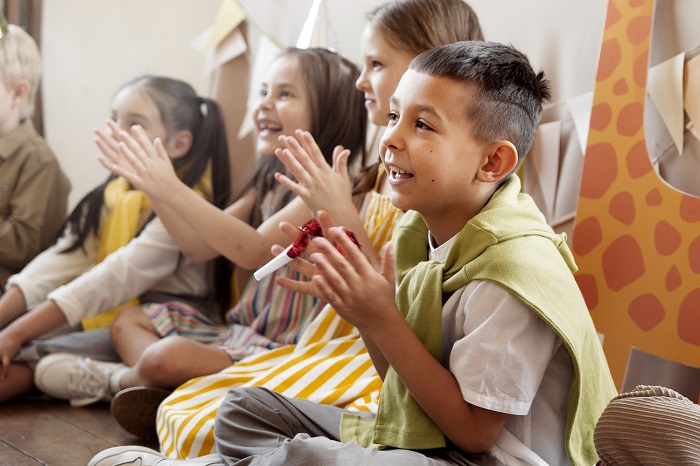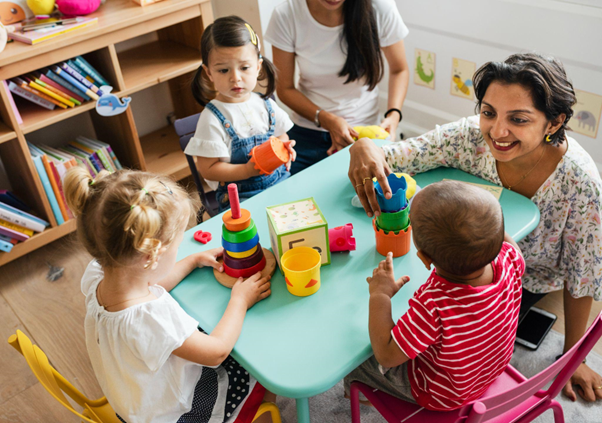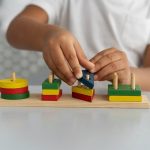Welcome, dear parents! In our journey to raise well-rounded, mindful children, one of the most transformative skills we can nurture is self-awareness. It’s a journey beyond textbooks and exams; it’s about guiding our young ones to understand and embrace their inner world. Today, let’s explore the beautiful realm of self-awareness in education. We will engage in useful and endearing activities to support our kids’ development into self-aware, sympathetic, and self-assured people. Are you prepared to go forward now? Let’s begin this enlightening adventure together!
Why is Self-Awareness important?
Self-awareness plays a pivotal role in a child’s development. It helps students:
Understand their Emotions: Recognizing and managing emotions is essential for mental well-being and social relationships. By tuning into their emotional states, students can effectively navigate the complexities of social interactions and cultivate resilience in the face of stress and anxiety.
Boost Confidence: Moreover, by gaining insight into their strengths and areas for growth, students can significantly boost their self-esteem and confidence. This self-awareness empowers them to foster a positive self-image and approach new challenges with a strong sense of assurance.
Enhance Decision-making Skills: Self-aware individuals make informed decisions by understanding their values and preferences. This skill is crucial in a world where choices can significantly impact their future paths.
Improve Academic Performance: Awareness of learning styles and challenges helps in tailoring effective study methods. Students can optimise their learning processes, leading to better academic outcomes.
Foster Empathy: Understanding oneself leads to understanding others, promoting empathy and social harmony. Empathetic individuals contribute to a more compassionate and inclusive society.
Teaching Self-Awareness in Schools
Teaching self-awareness in schools is becoming increasingly vital in today’s educational landscape. It involves guiding students to understand their emotions, thoughts, and actions, thereby fostering emotional intelligence. Teaching self-awareness in schools is not just an addition to the curriculum; it is an investment in developing mindful, empathetic future citizens. Incorporating exercises that foster introspection and emotional intelligence can help teachers establish a more encouraging and diverse classroom. This method enriches the school community overall and helps individual students as well.
Activity 1: Reflection Journals
Encouraging students to maintain a reflection journal is a powerful tool for developing self-awareness. By writing down thoughts, feelings, and experiences, students gain insights into their emotional responses and thought processes.
How to Implement:
Allocate 10-15 minutes daily or weekly for journaling. This consistent practice allows students to reflect on their experiences and emotions regularly.
Prompt students with questions like “What was the best part of your day?” or “How did you feel during a challenging situation?” These prompts guide their thoughts and encourage deeper reflection.
Activity 2: Role-Playing Exercises
Role-playing exercises allow students to step into others’ shoes, offering a unique perspective on different situations. This activity enhances empathy and self-reflection.
How to Implement:
Create scenarios that students might encounter in their daily lives. This could include dealing with peer pressure, resolving conflicts, or facing moral dilemmas.
Encourage them to act out different roles and discuss the feelings and motivations of each character. This helps them understand diverse perspectives and develop empathy.
New Sec
Acitvity 3: Mindfulness and Meditation
Mindfulness activities and meditation are not just practices; they’re gateways to inner peace and self-discovery for students. These techniques help students anchor themselves in the present, enhancing focus and reducing anxiety.
How to Implement:
Short, Guided Meditation Sessions: Introduce 5-10 minute sessions, focusing on simple mindfulness exercises like mindful breathing or body scans.
Breathing Exercises: Teach techniques like deep breathing or alternate nostril breathing to help manage stress and improve concentration.
Mindful Moments: Encourage students to take brief mindfulness breaks during the day to reconnect with the present moment.
Activity 4: An analysis of strengths and weaknesses
Finding strengths and weaknesses is more than just helping kids evaluate themselves; it’s also about giving them the tools they need to recognise and value their individuality.
How to Implement:
Personalised Assessments: Use varied methods like personality tests, skill assessments, or reflective essays to help students explore different facets of themselves.
Strengths-Based Projects: Design activities where students can utilise their strengths, reinforcing positive self-perception.
Weaknesses as Learning Opportunities: Frame weaknesses as areas for growth and development, encouraging a positive outlook towards personal challenges.
Activity 5: Feedback and Self-Assessment Sessions
Feedback and self-assessment are critical for fostering a culture of growth and self-improvement in students.
How to Implement:
Structured Feedback Sessions: Implement regular sessions where students can receive constructive feedback from teachers and peers.
Self-Assessment Tools: Provide self-assessment checklists or reflection sheets for students to evaluate their own progress.
Goal Setting: Encourage students to set personal goals based on feedback and self-assessment, fostering a sense of purpose and direction.
Creating a Safe Space for Sharing
Creating a safe space is about more than just open communication; it’s about cultivating trust and acceptance in the classroom.
How to Implement:
Emotional Literacy Workshops: Organise sessions to teach students about emotional intelligence and effective communication.
Trust-Building Activities: Engage in activities that build trust and camaraderie among students.
Anonymous Sharing Options: Provide platforms like suggestion boxes or online forums where students can share thoughts anonymously, if they prefer.
Incorporating Art and Creative Expression
Art and creative expression offer students a voice beyond words, a canvas to express their innermost thoughts and emotions.
How to Implement:
Themed Art Assignments: Assign art projects with themes related to self-exploration and emotional expression.
Interactive Creative Workshops: Conduct workshops in various art forms like painting, drama, or music that encourage self-expression.
Exhibition of Creative Work: Organise exhibitions or performances where students can showcase their creative projects, celebrating their individuality and creativity.
As we conclude our exploration of teaching self-awareness to children, it’s evident that this is a journey we undertake together. Children depend on the guidance and support of mentors, educators, and parents to navigate this path successfully. The activities we’ve discussed serve as stepping stones, fostering emotional intelligence and self-discovery. By providing these opportunities, we equip our children with the tools they need to blossom into thoughtful, compassionate, and confident individuals. Let’s commit to these practices, creating nurturing spaces for our children to flourish.
In closing, we introduce you to EuroKids, an innovative educational platform that resonates with the heart of Indian parenting. EuroKids isn’t just about academic excellence; it’s about nurturing the whole child. Our approach intertwines the wisdom of traditional values with the skills needed for a modern world, emphasising self-awareness, emotional intelligence, and holistic development. Join us at EuroKids, where education transcends the classroom, crafting brighter futures, one child at a time.














